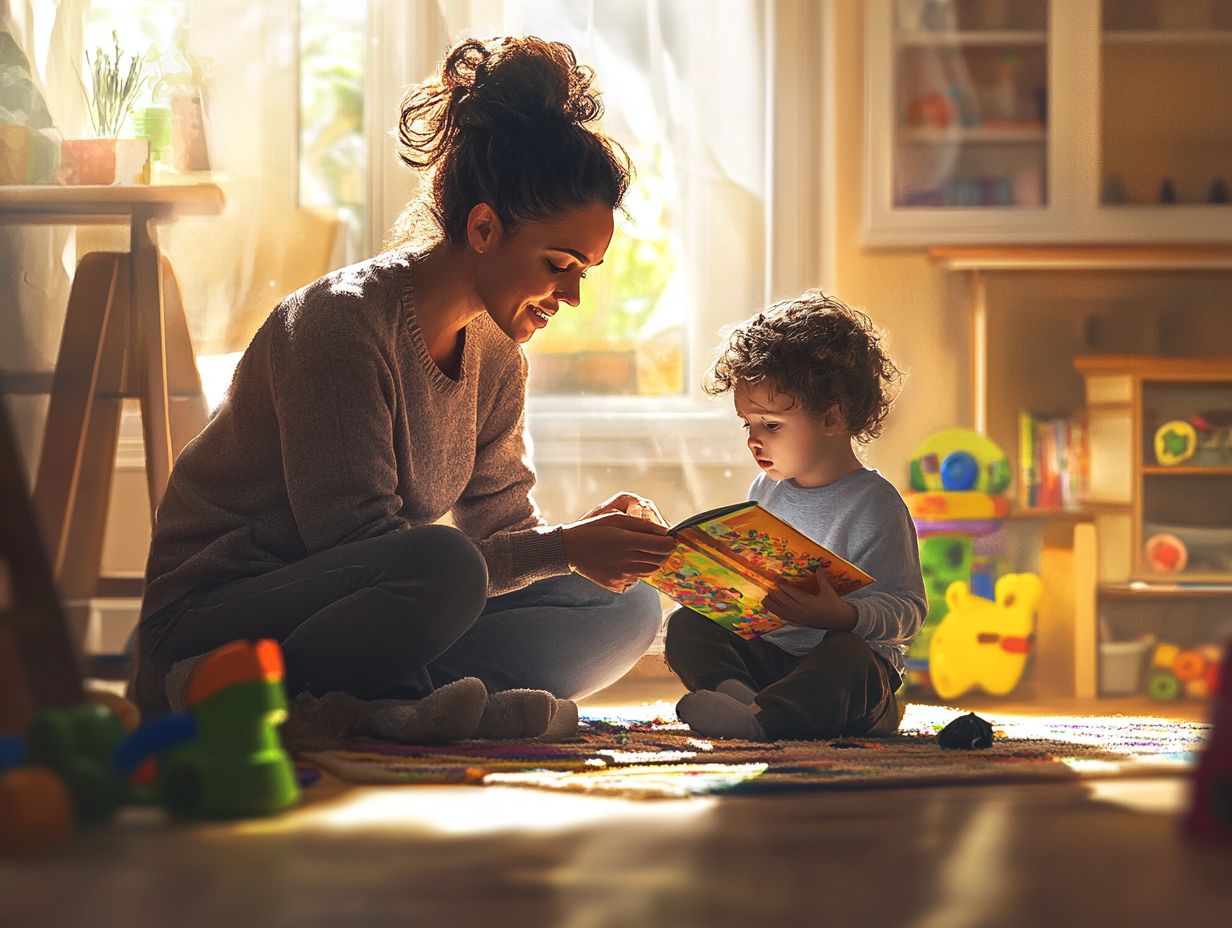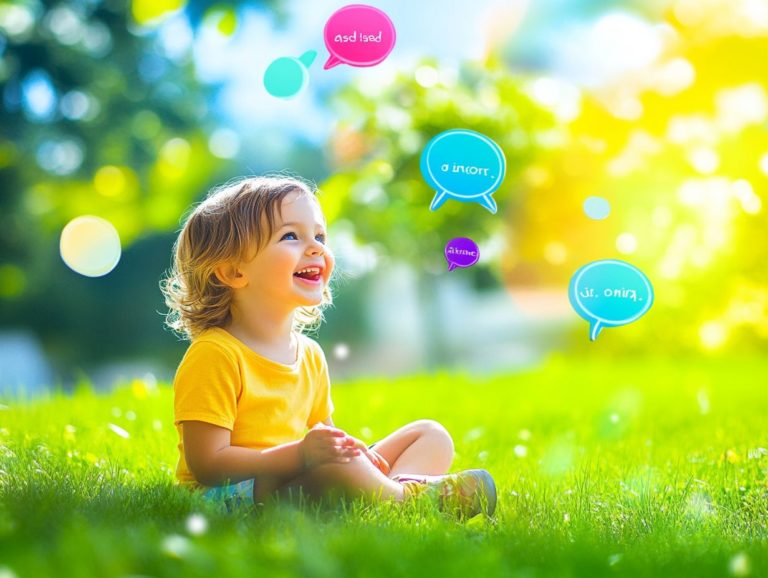Recognizing Emotional Triggers in Children
Contents
- Understanding Emotional Triggers in Children
- Key Takeaways:
- What are Emotional Triggers in Children?
- Why is it Important to Recognize Emotional Triggers in Children?
- Common Emotional Triggers in Children
- 4. Fear of Failure
- 5. Lack of Control
- How to Recognize Emotional Triggers in Children?
- What Can Parents Do to Help Their Children Manage Emotional Triggers?
- Creating a Safe and Supportive Environment
- Frequently Asked Questions
- What are emotional triggers in children?
- How can I recognize emotional triggers in children?
- What are some common emotional triggers in children?
- How can I help my child cope with emotional triggers?
- Are emotional triggers in children normal?
- When Should I Seek Professional Help for My Child’s Emotional Triggers?
Understanding Emotional Triggers in Children
Understanding emotional triggers in children is crucial for nurturing their emotional well-being and resilience. These triggers, frequently stemming from stress, negative self-talk, and feelings of overwhelm, can profoundly influence a child’s behavior, mental health, and overall development.
By recognizing these triggers, you can offer the essential support your child needs to navigate their emotions effectively. This article delves into common emotional triggers, guides you on how to identify them, and provides practical strategies to help your child manage their emotions with confidence and develop positive responses to emotional challenges.
Key Takeaways:

- Recognizing emotional triggers in children can help parents and caregivers better understand and support their child’s emotional well-being and improve child behavior.
- Common emotional triggers in children include stressful situations, negative self-talk, overwhelm, fear of failure, and lack of control.
- Observing behavior patterns, listening to what they say, and paying attention to physical cues can help parents recognize emotional triggers in their child, ultimately enhancing emotional safety and nurturing a supportive environment.
What are Emotional Triggers in Children?
Emotional triggers in children represent specific stimuli or experiences that evoke profound emotional reactions, often rooted in unresolved trauma or negative childhood experiences. These triggers can surface through various behaviors, such as anger, anxiety, or withdrawal. Recognizing these emotional responses is key to managing parenting challenges and promoting emotional regulation.
As a parent, understanding these triggers is crucial for your parenting journey. By recognizing what sets off these emotional responses, you can create a safe space where your child feels emotionally safe and supported.
This understanding fosters healthy emotional regulation and equips your child to respond positively to stressful situations and develop a sense of self-awareness.
Why is it Important to Recognize Emotional Triggers in Children?
Recognizing emotional triggers in children is essential, as it enables you to manage anger effectively, support emotional regulation, and cultivate healthy communication skills through mindful parenting and self-reflection.
Understanding how to address these triggers helps you tackle undesirable behavior patterns and plays a vital role in your child’s overall mental health and well-being. This understanding is crucial for managing emotional wounds and fostering emotional intelligence.
By identifying these triggers and employing effective parenting strategies, you can guide your children through emotional discomfort, enabling them to build resilience against the challenges posed by childhood trauma. This approach fosters a deeper understanding of feelings and emotions.
Common Emotional Triggers in Children
Common emotional triggers in children frequently arise from a range of experiences that can provoke intense feelings, leading to behaviors such as tantrums or withdrawal. These triggers often reflect underlying emotional discomfort and a need for mindful observation by parents.
These triggers may be found in everyday situations, like transitions, social interactions, or even reminders of past traumas, all of which can significantly affect their emotional safety and behavior patterns. Recognizing these triggers and understanding how to deal with them are key aspects of empathetic parenting.
By comprehending these typical triggers, you gain valuable insights that enable you to better support your child as they navigate their emotional responses and challenges.
Are you ready to help your child navigate their emotions? Start observing your child’s behavior today and unlock their emotional potential!
1. Stressful Situations
Stressful situations can serve as powerful emotional triggers for children, often leading to heightened responses like anxiety or anger. Whether it s a shift in routine, a new environment, or conflicts with peers, these scenarios can elicit overwhelming feelings that challenge a child s ability to cope. That s why adopting mindfulness techniques and other coping mechanisms can be crucial strategies for you as a parent, helping your child manage anger and respond more positively in these moments.
For example, when your child faces the first day of school or experiences a family relocation, the uncertainty and pressure can spark feelings of frustration and distress. Everyday conflicts, such as quarrels with friends during playtime, can escalate quickly if not addressed in a timely manner. Mindfulness techniques, including deep breathing exercises or guided visualization, can provide your child with the tools they need to calm their minds and foster emotional regulation, ultimately promoting healthy emotional responses.
Encouraging open communication allows your child to express their feelings freely, creating a supportive environment where they feel understood and valued. By weaving these coping mechanisms into daily routines, you can enable your child to navigate complex emotions more effectively, ultimately building resilience that will serve them well in the long run.
2. Negative Self-Talk
Negative self-talk serves as a powerful emotional trigger that can profoundly influence a child’s self-perception and overall mental well-being. When children internalize those detrimental messages about themselves, feelings of inadequacy and anxiety can take root, ultimately impacting their behavior and emotional responses across various situations. This highlights the importance of fostering self-compassion and building empathy in children.
By cultivating a supportive environment and nurturing positive self-talk, you can help mitigate these triggers and promote healthier experiences during childhood, ultimately leading to positive parenting outcomes.
The repercussions of negative self-talk can be significant, often presenting as low self-esteem, difficulties in social interactions, and challenges in academic settings. As a child wrestles with self-doubt, their ability to regulate emotions may wane, leading to outbursts or withdrawal. You, as a parent, play a pivotal role in shaping how children perceive themselves and manage emotional wounds.
Consider introducing strategies such as daily affirmations or reflective journaling to highlight their strengths and foster resilience. These techniques can effectively combat negative self-talk and build a more positive self-narrative.
Creating an emotional safe zone, where open discussions about feelings are encouraged, equips children with the tools they need to counteract negativity and construct a more positive self-narrative.
3. Overwhelm

Feelings of overwhelm can serve as powerful emotional triggers for children, often resulting in meltdowns or withdrawal as they grapple with their emotions. These intense feelings frequently stem from excessive stimuli, academic pressures, or intricate social dynamics, making it essential for you as a parent to identify and address these triggers early on. By developing effective coping mechanisms, such as mindfulness techniques and building empathy, you can enable your child to better manage their feelings and responses.
Being attuned to signs of distress, such as irritability or unexpected quietness, enables you to intervene with grace and offer the necessary support. Strategies like deep breathing, mindfulness practices, or engaging in physical activities can equip your child with valuable tools to navigate their emotional landscape. Creating a safe and open environment for discussion encourages your child to express their feelings without the fear of judgment, enhancing their emotional intelligence.
By fostering resilience and emotional intelligence, you can guide your child not only to confront overwhelming situations but also to emerge from them stronger and more self-aware.
4. Fear of Failure
A fear of failure can be a powerful emotional trigger for children, often rooted in childhood experiences or trauma linked to performance and self-worth. This fear can lead to significant anxiety and avoidance behaviors, particularly in children. It affects their willingness to engage in activities where they sense potential failure.
As a parent, it s essential to recognize this trigger and use helpful strategies that foster a belief that abilities can be developed through hard work and resilience.
Understanding the origins of this fear is crucial. It often stems from high parental expectations, critical feedback, or comparisons to peers that may have left a lasting impact. Children may associate their self-worth with their achievements, creating overwhelming pressure. Such feelings can create barriers to learning and personal growth, as the constant dread of stumbling can stifle exploration and creativity.
Recognizing these triggers and managing them effectively is key to positive parenting. To counteract these effects, prioritize emotional safety in your household. Talk openly about feelings and normalize mistakes as an integral part of the learning process.
Techniques such as mindfulness exercises, positive reinforcement, and gradual exposure to challenging tasks can help diminish this anxiety. This paves the way for a more resilient mindset in your children. These parenting techniques are essential for fostering healthy emotional development.
5. Lack of Control
A lack of control in their environment can trigger intense emotional responses in children, often resulting in frustration, anger, or defiance. When children feel powerless to influence their circumstances, it amplifies their emotional discomfort, leading to unhealthy behavior patterns.
As a parent, it s essential to use effective strategies that enable your child to regain a sense of control in challenging situations. Understanding these triggers and managing them effectively can prevent unhealthy reactions and promote healthier emotional responses.
This feeling of helplessness can manifest in various forms, making it crucial for you to recognize the signs of emotional distress. By fostering an environment where your child can make choices whether about their daily routines, activities, or even the clothes they wear you validate their feelings and instill a sense of agency and responsibility.
Encouraging decision-making, setting small goals, and providing opportunities for problem-solving can significantly enhance their emotional resilience. These parenting techniques foster a sense of self-compassion and emotional intelligence in your child.
Consistent communication about feelings and creating routines can help your child feel safe and thrive both emotionally and socially. By recognizing feelings and engaging in mindful parenting, you contribute significantly to your child’s overall mental health and well-being.
How to Recognize Emotional Triggers in Children?
Recognizing emotional triggers in children requires a sharp eye and a deep sense of self-awareness. This enables you to pinpoint behavior patterns that signal distress or discomfort. Understanding child behavior and parenting triggers can help you manage emotional reactions more effectively.
Engaging in mindful observation allows you to become attuned to your child’s emotional responses in different situations. This lays the groundwork for effective communication and support. This approach also enhances self-perception and helps in recognizing feelings more accurately.
This proactive approach to understanding triggers enriches your parenting journey and strengthens the bond between you and your child.
By paying attention to these triggers, you can help your child grow into a more resilient and confident individual.
1. Observe Behavior Patterns
Recognizing emotional triggers in children requires a sharp eye and a deep sense of self-awareness, enabling you to pinpoint behavior patterns that signal distress or discomfort. Understanding child behaviour and parenting triggers can help in managing emotional reactions more effectively.
By engaging in mindful observation, you can become attuned to your child’s emotional responses in different situations, which lays the groundwork for effective communication and support. This approach also enhances self-perception and helps in recognising feelings more accurately.
This proactive approach to understanding triggers not only enriches your parenting journey but also fortifies the bond between you and your child.
1. Observe Behavior Patterns
Observing behavior patterns is a crucial step in recognizing emotional triggers in children, allowing you to identify consistent responses to specific situations. By paying close attention to how your child reacts in various contexts, you can uncover hidden emotional triggers that may lead to anger or distress. This insight enables you to develop more effective coping mechanisms tailored to address your child’s unique emotional landscape. This is an important aspect of mindful parenting.
Recognizing these behavior patterns not only aids in understanding the root causes of emotional reactions but also enhances your relationship with your child through improved communication. For example, if your child consistently withdraws in social settings, they may be signaling feelings of anxiety or insecurity. By identifying such trends, you can proactively introduce strategies that foster emotional resilience and address parenting challenges.
Integrating mechanisms like mindfulness exercises or positive reinforcement can equip your child with essential tools to navigate their emotions more effectively. Ultimately, enhancing your awareness in this area helps you support your child’s emotional growth, leading to more harmonious interactions and a deeper connection. Incorporating mindfulness techniques can be particularly beneficial in this regard.
2. Listen to What They Say

Listening to what children express is essential in recognizing their emotional triggers, as their words often unveil underlying feelings and reactions. Engaging in supportive conversations enables you to grasp your child s perspective and the emotions linked to particular experiences. Cultivating strong communication skills is vital in creating an environment where children feel enableed to express their emotions openly.
By actively listening, you can pinpoint patterns that reveal what truly matters to your children, and subtle cues may indicate deeper emotional needs. It s not solely about hearing their words; it s also about observing body language and tone, which provide critical context to their feelings.
To foster meaningful dialogues, consider asking open-ended questions, validating your child s emotions, and establishing a calm atmosphere free from distractions. Exercising patience and empathy, rather than jumping to conclusions, can significantly enhance these interactions, making children feel valued and understood. This approach ultimately contributes to healthier emotional development.
3. Pay Attention to Physical Cues
By paying attention to physical cues, you can significantly enhance your ability to recognize emotional triggers in your children. Body language and facial expressions often convey feelings far more powerfully than words ever could. These cues can indicate stress, anger, or discomfort, enabling you to intervene and support them in a timely manner. By observing these physical responses, you can facilitate emotional regulation and create a more nurturing environment.
For instance, clenched fists may signal frustration, while a furrowed brow often points to confusion or worry. When you are attuned to these subtle signs, you can respond more effectively whether that means providing comfort, asking open-ended questions, or simply allowing your child the space to process their emotions.
Additionally, observing your child s posture can reveal their level of engagement or withdrawal, which informs how proactive you should be in your approach. Cultivating this awareness enhances the parent-child dynamic, making it easier for you to address emotional needs and foster resilience.
What Can Parents Do to Help Their Children Manage Emotional Triggers?
You play a crucial role in helping your children navigate emotional triggers by using effective coping strategies and creating a supportive environment. Responding positively to challenging situations fosters emotional safety, which encourages healthy communication.
1. Teach Coping Strategies
Teaching your children coping strategies is essential for helping them manage emotional triggers and understand their feelings. Consider introducing mindfulness techniques, such as deep breathing or visualization exercises, to equip them with tools to navigate their emotions constructively.
Encouraging your children to engage in gratitude journaling can be particularly beneficial. This practice allows them to reflect on positive experiences at the end of each day and can create a powerful shift in how your child views their experiences!
2. Encourage Emotional Awareness
Modeling emotional regulation yourself is effective. When you openly discuss your feelings and demonstrate coping strategies, you normalize this process, making it feel safe and accessible for your children.
Engaging in physical activities like yoga or nature walks can also play a crucial role in balancing emotions. Incorporating these strategies into your child’s emotional toolkit ensures they are well-equipped to navigate life’s ups and downs with grace.
2. Encourage Open Communication
Encouraging open communication is crucial. It creates a safe environment for children to express their emotions and discuss their triggers.
By engaging in supportive conversations, you can help them articulate their feelings and experiences. This enhances their emotional safety and promotes healthier emotional regulation.
This practice also plays a crucial role in managing anger and reducing emotional discomfort.
Make regular check-ins a part of your routine! Carve out dedicated time for discussions free from distractions.
This approach not only strengthens your bond but also enables your children to feel heard and validated in their emotions.
Practicing active listening where you reflect back what you hear reinforces emotional safety and helps identify specific triggers.
As a result, your children will learn to navigate their emotional landscape more effectively. This builds resilience and confidence in managing their feelings.
Such open lines of communication enhance emotional understanding, equipping your children with essential tools for future interactions and challenges. This is a vital aspect of positive parenting.
Creating a Safe and Supportive Environment
3. Create a Safe and Supportive Environment

Creating a safe and supportive environment is essential for children. It establishes the groundwork for healthy emotional development and behavior.
When children feel secure and emotionally safe, they are more inclined to express their feelings openly. They can also manage their emotional triggers effectively.
To create such an environment, you can practice:
- Active listening
- Validate your child’s feelings
- Encourage open discussions about emotions
Simple actions like establishing routines can greatly reduce anxiety. This allows your child to feel more in control.
By consistently being available, you foster trust, reinforcing their sense of emotional safety.
The impact of these practices on your child’s behavior can be profound. They will learn to manage stress and respond to triggers, ultimately enhancing their social interactions and personal development.
This approach is crucial for addressing emotional wounds and childhood trauma!
4. Seek Professional Help if Needed
Seeking professional help to manage emotional triggers is crucial, especially when your child is facing serious emotional struggles or showing signs of unresolved trauma. Mental health support from professionals can provide you with tailored strategies and interventions that you may not be equipped to handle alone. This proactive approach ensures that your child receives the necessary guidance to navigate their emotions effectively.
When you notice your child exhibiting persistent sadness, withdrawal from social interactions, or challenges in school, it’s essential to recognize these signs as indicators that they might need extra support. Consult a mental health expert to discuss emotions and coping mechanisms, creating a safe space for your child to express themselves. Managing triggers is vital.
This support tackles immediate emotional triggers effectively and builds your child’s strength, helping them feel good overall. Professional help can also be crucial in managing issues related to parenting and childhood experiences.
Ultimately, investing in mental health services can lay the groundwork for a healthier emotional landscape as they grow, supporting their overall childhood development.
This video, hosted on YouTube (a service by Google LLC), offers tips on managing emotional triggers in children.
Frequently Asked Questions
Understanding and managing your child’s emotional responses is a significant part of the parenting journey. Here are some common questions parents ask:
What are emotional triggers in children?
Emotional triggers are events, situations, or words that can cause an intense emotional reaction in children. These reactions can range from anger and frustration to fear and sadness. Understanding triggers can help parents manage their child’s behavior effectively.
How can I recognize emotional triggers in children?
It is important to pay attention to your child’s behavior, body language, and verbal cues. Look for patterns in their reactions and identify what seems to be causing the emotional response. Recognizing feelings and emotions is key to identifying triggers and emotional responses in children.
What are some common emotional triggers in children?
Common emotional triggers in children include feeling ignored or left out, being told “no” or not getting their way, feeling overwhelmed or stressed, and experiencing big changes or transitions. These triggers can lead to unhealthy reactions and impact their self-perception.
How can I help my child cope with emotional triggers?
One way to help your child cope with emotional triggers is to teach them healthy coping mechanisms, such as deep breathing or taking a break. It’s important to talk about their feelings. Practicing mindfulness techniques and fostering empathy can make a big difference in your child’s life!
It is also crucial to validate their emotions and provide a safe, supportive environment where they feel heard and understood.
Are emotional triggers in children normal?
Yes, experiencing emotional triggers is a normal part of childhood development. It is vital for children to learn how to cope with their emotions in a healthy way as they grow and mature. This understanding is a crucial aspect of their parenting journey and learning emotional regulation.
When Should I Seek Professional Help for My Child’s Emotional Triggers?
If your child experiences emotional triggers that disrupt their daily life or relationships, it s time to consider professional help from a therapist or counselor. Addressing these issues early can make a significant difference in their mental health.
Don t hesitate to reach out for support taking this step can lead to a healthier, happier future for your child.






